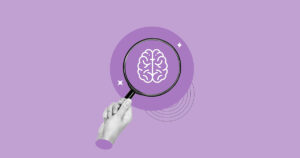Obsessive-compulsive disorder (OCD) is a mental health condition that affects millions of people worldwide. In this article, we will delve into the statistics surrounding OCD and shed light on the global prevalence of this disorder. Additionally, we will explore OCD in different age groups, gender differences in OCD prevalence, and the impact of OCD on quality of life.
Understanding Obsessive-Compulsive Disorder (OCD)
Defining OCD: A Brief Overview
Obsessive-compulsive disorder affects individuals of all ages, races, and backgrounds. It is a chronic condition, meaning it typically lasts for a long time. According to the Diagnostic and Statistical Manual of Mental Disorders (DSM-5), OCD affects approximately 2-3% of the global population.
Individuals with OCD may also experience comorbid conditions such as anxiety disorders, depression, or eating disorders. The impact of OCD extends beyond the individual, affecting family members and caregivers who provide support and assistance in managing the symptoms.
Common Symptoms and Types of OCD
The symptoms of OCD can vary widely from person to person. Some common obsessions include fears of contamination, excessive doubts, and a need for symmetry or order. Compulsions often involve repetitive behaviors like excessive handwashing, checking, or counting.
OCD can be categorized into different subtypes based on the nature of the obsessions and compulsions. These include contamination-related OCD, harm-related OCD, and hoarding disorder, among others.
Understanding the specific symptoms and subtypes of OCD is essential in developing personalized treatment plans that address the unique needs of each individual. Therapy, medication, and lifestyle modifications are often recommended as part of a comprehensive approach to managing OCD.
Global Prevalence of OCD
OCD Statistics Worldwide
Research endeavors focused on OCD statistics transcend geographical boundaries, shedding light on the pervasive nature of this disorder across different continents. The nuanced approach to data collection and analysis reveals a spectrum of prevalence rates, offering a glimpse into the intricate tapestry of OCD’s impact on global populations.
As researchers navigate the labyrinth of OCD statistics worldwide, they encounter a myriad of challenges, from standardizing diagnostic criteria to accounting for cultural nuances that shape the expression of OCD symptoms. This dynamic interplay of factors underscores the importance of a holistic approach to understanding and addressing the global prevalence of OCD.
OCD in Developed vs Developing Countries
Exploring the landscape of OCD prevalence unveils intriguing patterns that differentiate between developed and developing countries. The juxtaposition of higher OCD rates in developed nations against the backdrop of varying cultural interpretations underscores the need for a nuanced understanding of how OCD manifests in diverse socio-economic contexts.
While the disparity in OCD prevalence between developed and developing countries sparks curiosity, it also underscores the need for cross-cultural research initiatives that delve deeper into the underlying factors shaping these trends. By unraveling the complexities of OCD prevalence on a global scale, researchers strive to bridge the gap between knowledge and action, paving the way for more inclusive and effective mental health interventions.
OCD in Different Age Groups
OCD in Children and Adolescents
While OCD can affect individuals of all ages, children and adolescents often experience different symptoms compared to adults. In this age group, common obsessions may revolve around fears of harm coming to themselves or their loved ones.
These distressing thoughts can be overwhelming and cause significant anxiety. Compulsions, on the other hand, may manifest as repetitive behaviors such as seeking reassurance from parents or caregivers or repeating certain phrases to alleviate their anxiety.
Early intervention and appropriate treatment are crucial for minimizing the impact of OCD on the daily lives of children and adolescents. Recognizing the signs and symptoms early on can lead to improved outcomes and a better quality of life. It is vital for parents, teachers, and healthcare professionals to work together to provide support and guidance to these young individuals as they navigate the challenges posed by OCD.
OCD in Adults and the Elderly
OCD can persist into adulthood or develop later in life, affecting individuals in their prime years and beyond. Adults and the elderly may experience obsessions related to cleanliness, religion, or concerns about personal safety. These obsessions can be distressing and intrusive, making it difficult for individuals to focus on their daily activities. Compulsions, in this age group, may involve checking behaviors or engaging in mental rituals to alleviate their anxiety.
It is important to note that the impact of OCD on adults and the elderly can be significant, affecting various aspects of their lives, including relationships, work, and overall emotional well-being. The constant battle with intrusive thoughts and the need to perform compulsions can be exhausting and isolating.
Seeking professional help and engaging in evidence-based treatments, such as cognitive-behavioral therapy or ketamine infusion therapy, can make a substantial difference in managing the symptoms and improving the quality of life for individuals in this age group.
Gender Differences in OCD Prevalence
OCD in Men: An Overview
Research suggests that OCD may be slightly more common in men than in women. Men with OCD often report obsessions and compulsions related to symmetry and orderliness. They may also exhibit higher rates of hoarding behavior compared to women. Understanding the gender-specific aspects of OCD can help tailor treatment approaches and support systems to better meet the unique needs of males affected by this disorder.
OCD in Women: An Overview
While men may have slightly higher prevalence rates of OCD, it is essential to recognize that it can still significantly impact women’s lives. Women with OCD may experience obsessions and compulsions related to cleanliness, safety, or harm prevention. Providing appropriate support and resources specifically designed for women can contribute to better outcomes and well-being for individuals living with OCD.
The Impact of OCD on Quality of Life
OCD and Mental Health
OCD is a recognized mental health condition that can coexist with other mental disorders, such as depression and anxiety. The distress caused by obsessions and the need to perform compulsions can lead to significant psychological distress, impairing daily functioning and overall well-being.
Seeking professional help from mental health experts, such as therapists or psychiatrists, can provide invaluable support in managing OCD and promoting positive mental health. Effective treatment options, such as cognitive-behavioral therapy (CBT), ketamine infusion therapy, and medication, have shown promising results in reducing OCD symptoms and improving overall mental well-being.
OCD and Physical Health
While OCD is primarily recognized as a mental health condition, it can also have physical health implications. The repetitive behaviors associated with OCD, such as excessive handwashing or checking, can lead to physical issues like dermatitis, infections, and injury.
Additionally, the significant stress and anxiety associated with OCD can affect sleep patterns, appetite, and overall physical health. It is imperative for individuals with OCD to prioritize their physical well-being, seeking appropriate medical support when needed.
To learn about the OCD treatment options available at Soft Reboot Wellness, contact us today to schedule a mental health consultation.





